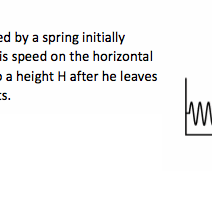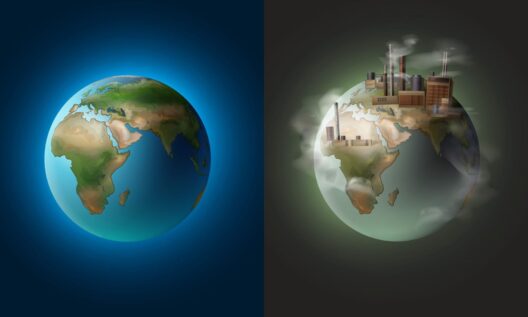Energy conservation is a pivotal element in addressing several pressing environmental challenges. However, low conservation of energy—characterized by excessive energy consumption and inadequate resource management—yields significant repercussions on both the environment and society. To comprehend the implications of low energy conservation, it is essential to dissect its causes and potential consequences.
Understanding Low Conservation of Energy
Low conservation of energy denotes a state where energy consumption far exceeds necessary usage while at the same time undervaluing sustainability practices. This phenomenon manifests in various forms, from unabated reliance on fossil fuels to neglecting energy-efficient technologies. In essence, low conservation can be viewed as an indifference towards optimizing energy use and minimizing waste.
Causes of Low Conservation of Energy
Several interrelated factors contribute to the persistent issue of low energy conservation. Understanding these can foster discourse on rectifying actions.
1. Economic Incentives
Economic parameters play a critical role in energy consumption patterns. In many instances, cheaper fossil fuels and conventional energy sources outcompete renewable alternatives. This disparity creates a psychological barrier against adopting energy-efficient technologies. Moreover, consumers and businesses often prioritize short-term savings over long-term sustainability, fostering an environment conducive to low conservation.
2. Lack of Awareness
A pervasive lack of awareness surrounding energy conservation practices exacerbates the crisis. Many individuals and organizations remain uninformed about the benefits of energy efficiency. Educational institutions often overlook the importance of integrating energy conservation into their curricula. Consequently, the population may lack the motivation to adopt sustainable practices, leading to an unexamined reliance on energy-intensive lifestyles.
3. Institutional Inefficiencies
Governmental policies and regulations can significantly influence energy conservation efforts. In many jurisdictions, regulatory frameworks are lagging. The absence of stringent energy efficiency mandates allows industries to operate without considering their environmental impact. This lack of oversight results in a status quo where low energy conservation goes unchallenged.
4. Technological Barriers
While advancements in energy-efficient technologies are promising, numerous barriers still obstruct their widespread adoption. High initial costs associated with implementing renewable energy systems or retrofitting buildings with energy-efficient infrastructure can deter both consumers and businesses. Furthermore, the complexity of some technologies necessitates specialized knowledge for proper implementation, which can be intimidating and result in inaction.
Consequences of Low Conservation of Energy
The ramifications of failing to prioritize energy conservation are multi-faceted, impacting environmental, economic, and social spheres.
1. Environmental Degradation
The most immediate consequence of low energy conservation is environmental degradation. Higher energy consumption correlates with increased greenhouse gas emissions, a primary driver of climate change. The burning of fossil fuels contributes to air pollution, habitat destruction, and the degradation of ecosystems. Irrevocable consequences, including biodiversity loss and extreme weather events, emerge from our inability to curtail energy waste.
2. Economic Instability
Over-dependence on energy-intensive practices incurs significant economic costs. As resources dwindle and climate-related disasters become more frequent, the economic ramifications intensify. Businesses encountering higher operational costs due to energy expenses can lead to inflated consumer prices and diminished purchasing power. Furthermore, economies reliant on fossil fuels may face instability as they navigate the transition toward sustainable alternatives.
3. Social Inequities
The repercussions of low energy conservation extend into the social fabric of societies. Disparities emerge as marginalized communities face disproportionate exposure to pollution and climate-related hazards. These vulnerable groups often lack the resources or political power to advocate for change, perpetuating cycles of inequity. Investing in energy conservation strategies can bridge this gap, creating equitable opportunities for all.
4. Loss of Biodiversity
Power plants, extractive industries, and infrastructural developments often invade natural habitats in pursuit of energy sources. This encroachment leads to habitat fragmentation, posing a severe risk to biodiversity. As species struggle to adapt to altered environments, extinction rates escalate. The loss of biodiversity diminishes ecosystem resilience, making it increasingly difficult for the planet to recover from environmental stresses.
Conclusion
Low conservation of energy is not merely an abstract concept; it constitutes a tangible threat that necessitates urgent remediation. By recognizing the underlying causes—economic incentives, lack of awareness, institutional inefficiencies, and technological barriers—society can navigate toward better solutions. The consequences of inaction are profound, affecting environmental integrity, economic stability, and social equity. Emphasizing energy conservation is not just an environmental imperative; it is a pathway to fostering a more equitable and sustainable future.
In summation, comprehending and mitigating low energy conservation is essential for fostering a healthier planet. An inclusive approach that champions innovative technologies, educates individuals, and enforces robust regulatory measures will be paramount in addressing this pervasive challenge. Active participation from all segments of society is essential for ushering in an era of responsible energy stewardship.







